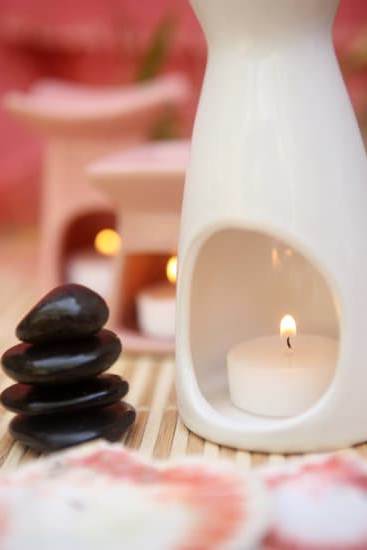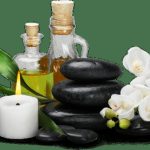Lavender aromatherapy is a popular practice known for its calming and relaxing effects on both the mind and body. In this article, we will delve into the differences between Dutch and English lavender varieties in aromatherapy. Both of these lavender types offer unique qualities and benefits that cater to various needs and preferences.
The keyword “dutch vs english lavender aromatherapy” highlights the focus of this article, shedding light on the distinctive characteristics of each variety when used in aromatherapy practices. Understanding the origins, history, benefits, growing methods, scent profiles, and best applications of Dutch and English lavender can help individuals make informed choices when incorporating these essential oils into their wellness routines.
Dutch lavender, also known as Lavandula x intermedia or Lavandin, has its own set of aromatherapy advantages that differ from traditional English lavender (Lavandula angustifolia). Similarly, English lavender boasts its own historical significance and therapeutic properties that set it apart from other lavender varieties. By exploring these differences in detail, readers can gain a deeper appreciation for the nuances of each type of lavender and how they can enhance their aromatherapy experiences.
The Origin and History of Dutch Lavender
Lavender, a fragrant herbaceous plant known for its calming and soothing properties, has been used in aromatherapy for centuries. Originating from the Mediterranean region, lavender species have adapted to various climates and cultures over time, leading to different varieties such as Dutch lavender. The history of Dutch lavender dates back to the 16th century when it was brought to the Netherlands from Southern Europe.
Dutch Lavender Cultivation
Dutch lavender, also known as Lavandula angustifolia ‘Dutch’, thrives in cooler climates and is well-suited for cultivation in countries like the Netherlands. The Dutch have a long tradition of growing lavender for its essential oils and medicinal purposes. With its distinct floral aroma and high concentration of essential oils, Dutch lavender has become a popular choice in aromatherapy products and formulations.
Historical Significance
The cultivation of Dutch lavender has been deeply intertwined with the culture and history of the Netherlands. In the past, Dutch lavender was prized for its fragrance and therapeutic properties, with farmers dedicating fields to its cultivation. Today, Dutch lavender continues to be an important crop in the region, contributing to the country’s rich agricultural heritage. Its history reflects a deep appreciation for the benefits of aromatherapy and natural remedies.
As interest in aromatherapy continues to grow worldwide, understanding the origin and history of Dutch lavender provides valuable insight into its unique characteristics and benefits in comparison to other lavender varieties, such as English lavender. Whether you are exploring aromatherapy for relaxation, stress relief, or holistic healing, incorporating Dutch lavender into your routine can offer a distinctive olfactory experience that sets it apart from other varieties like English lavender.
The Origin and History of English Lavender
English lavender, scientifically known as Lavandula angustifolia, has a rich history dating back centuries. Originally native to the Mediterranean region, English lavender was introduced to the United Kingdom in the 16th century. It quickly gained popularity for its sweet fragrance and therapeutic properties, making it a staple in traditional English herbal medicine.
Over time, English lavender became synonymous with relaxation and stress relief due to its calming effects on the mind and body. The plant’s essential oil is widely used in aromatherapy practices to promote relaxation, improve sleep quality, and reduce anxiety. English lavender’s soothing aroma is believed to have a balancing effect on emotions, making it a popular choice for those seeking mental and emotional well-being through natural remedies.
In addition to its aromatic benefits, English lavender is also valued for its medicinal properties. The plant contains compounds that have anti-inflammatory, antioxidant, and antimicrobial properties, making it a versatile herb in holistic health practices.
From soothing skin irritations to relieving tension headaches, English lavender offers a wide range of therapeutic benefits when used in aromatherapy treatments. Whether diffused in the air or applied topically with carrier oils, the calming scent of English lavender can provide comfort and relaxation to those seeking relief from daily stressors.
Aromatherapy Benefits of Dutch Lavender
Stress Relief
One of the key aromatherapy benefits of Dutch lavender is its ability to help alleviate stress and promote relaxation. The soothing scent of Dutch lavender essential oil has been used for centuries to calm the mind and body, making it a popular choice for individuals looking to unwind after a long day. Inhaling the aroma of Dutch lavender can help reduce feelings of anxiety and tension, creating a sense of tranquility in your surroundings.
Improved Sleep Quality
Another significant benefit of using Dutch lavender in aromatherapy is its potential to improve sleep quality. Research has shown that inhaling the calming aroma of Dutch lavender essential oil before bedtime can help promote deeper and more restful sleep. This makes it an excellent natural remedy for individuals struggling with insomnia or other sleep-related issues.
Skin Care Benefits
In addition to its relaxing properties, Dutch lavender also offers several skin care benefits when used in aromatherapy. The anti-inflammatory and antibacterial properties of Dutch lavender essential oil make it an effective treatment for various skin conditions, such as acne, eczema, and dry skin. It can also help soothe irritations and reduce redness, making it a versatile ingredient in skincare products for all skin types.
Aromatherapy Benefits of English Lavender
English lavender, scientifically known as Lavandula angustifolia, is a popular choice in aromatherapy due to its soothing and calming properties. This type of lavender has been used for centuries to promote relaxation, reduce anxiety, and aid in sleep. Here are some key benefits of incorporating English lavender into your aromatherapy routine:
1. Stress Relief: English lavender essential oil is renowned for its ability to alleviate stress and promote relaxation. By inhaling the sweet floral scent of English lavender, it can help calm the mind and reduce feelings of anxiety.
2. Sleep Aid: Many people turn to English lavender aromatherapy to improve their quality of sleep. Diffusing this essential oil in the bedroom before bedtime can create a peaceful environment that encourages restful sleep.
3. Skin Care: In addition to its aromatic benefits, English lavender oil is also prized for its skincare properties. It has anti-inflammatory and antioxidant properties that can help soothe irritated skin, reduce redness, and promote overall skin health.
Whether you are looking to unwind after a long day, improve your sleep quality, or enhance your skincare routine, English lavender aromatherapy may be just what you need. Its gentle yet powerful scent can provide a range of benefits for both the mind and body. Consider incorporating this fragrant essential oil into your daily self-care rituals for a holistic approach to well-being.
Growing and Harvesting Differences Between Dutch and English Lavender
Dutch and English lavender are both popular choices for aromatherapy due to their soothing and relaxing properties. However, there are notable differences in how these two varieties are grown and harvested.
Dutch lavender, also known as Lavandula x intermedia or Lavandin, is a hybrid plant that is cultivated for its high essential oil content. It is typically grown in colder climates and has a stronger scent compared to English lavender. Dutch lavender requires well-drained soil and plenty of sun to thrive. The harvesting process for Dutch lavender usually occurs in the summer when the flowers are at their peak oil concentration.
On the other hand, English lavender, scientifically known as Lavandula angustifolia, is native to the Mediterranean region but is also grown in England and other temperate climates. English lavender is prized for its sweet fragrance and is often used in perfumes and cosmetics. This variety thrives in warmer climates with ample sunlight and good air circulation. Harvesting of English lavender typically takes place in late spring or early summer before the flowers fully bloom.
In comparing the growing and harvesting differences between Dutch and English lavender, it’s important to consider factors such as climate preferences, soil requirements, and timing of harvest. Each variety has its own unique characteristics that contribute to its aroma and efficacy in aromatherapy practices.
| Dutch Lavender | English Lavender |
|---|---|
| Grown in colder climates | Native to Mediterranean region |
| Requires well-drained soil | Thrives in warmer climates |
| Harvested in summer | Harvested late spring/early summer |
Comparing the Scent Profiles of Dutch and English Lavender
When it comes to comparing the scent profiles of Dutch and English lavender in aromatherapy, there are notable differences that can influence your choice based on personal preferences or specific therapeutic goals. Dutch lavender, also known as Lavandula x intermedia, is a hybrid variety derived from Lavandula angustifolia (English lavender) and Lavandula latifolia (spike lavender).
It typically has a sharper, more camphor-like aroma compared to English lavender. This robust scent profile makes Dutch lavender well-suited for applications where a more intense fragrance is desired, such as in cleaning products or insect repellents.
On the other hand, English lavender (Lavandula angustifolia), known for its sweet and floral fragrance, is often preferred for its calming and relaxing properties in aromatherapy. The gentle aroma of English lavender is widely used in products aimed at promoting stress relief, better sleep, and overall emotional wellness. Its soothing scent profile makes it a popular choice for diffusing in bedrooms or adding to bath salts and massage oils.
In terms of specific chemical composition, both Dutch and English lavender contain similar compounds such as linalool and linalyl acetate, which contribute to their therapeutic effects. However, the ratios of these compounds can vary between the two varieties, resulting in distinct aromatic profiles that may appeal to different individuals. Ultimately, whether you choose Dutch or English lavender for aromatherapy depends on your personal scent preferences and the intended use of the essential oil.
| Lavender Variety | Key Characteristics |
|---|---|
| Dutch Lavender | Sharp, camphor-like aroma; intense fragrance suitable for cleaning products and insect repellents |
| English Lavender | Sweet, floral fragrance; gentle aroma ideal for promoting relaxation and emotional wellness |
Best Uses and Applications of Dutch vs English Lavender in Aromatherapy
When it comes to the world of aromatherapy, both Dutch and English lavender play significant roles in providing various benefits for overall well-being. Dutch lavender, also known as Lavandula x intermedia, is a hybrid of true lavender and spike lavender.
It is generally recognized for its stronger scent compared to English lavender, making it a popular choice for aromatherapy enthusiasts seeking a potent fragrance. Dutch lavender essential oil is often used in diffusers or added to bath salts for a calming and uplifting experience.
On the other hand, English lavender, known as Lavandula angustifolia, is considered the most traditional and widely cultivated type of lavender. With its delicate fragrance and soothing properties, English lavender essential oil is commonly used in aromatherapy to promote relaxation and reduce stress. Its gentle aroma makes it suitable for blending with other essential oils like chamomile or frankincense for a harmonious scent profile that enhances relaxation and inner peace.
In terms of applications, both Dutch and English lavender can be used in similar ways in aromatherapy. They can be added to massage oils to alleviate muscle tension or incorporated into homemade candles or room sprays for a fragrant atmosphere. Whether you prefer the robust scent of Dutch lavender or the softer fragrance of English lavender, incorporating either variety into your aromatherapy routine can bring therapeutic benefits to both body and mind.
Conclusion
In conclusion, when it comes to choosing the right lavender for your aromatherapy needs, both Dutch and English lavender offer unique benefits and characteristics. Dutch lavender, with its slightly spicier and more robust scent profile, is often preferred for its ability to promote relaxation and ease symptoms of anxiety and stress. On the other hand, English lavender is known for its sweeter and lighter fragrance, making it ideal for promoting sleep and reducing feelings of restlessness.
Whether you decide to use Dutch or English lavender in your aromatherapy practices ultimately depends on your personal preferences and desired outcomes. If you are looking for a more intense aroma that can help calm the mind and body, then Dutch lavender may be the right choice for you. However, if you are seeking a gentle and soothing scent that can aid in improving sleep quality or easing headaches, English lavender may be more suitable.
In the end, experimenting with both types of lavender can provide a comprehensive aromatherapy experience that allows you to fully explore the benefits of each. Whichever variety you choose, incorporating dutch vs english lavender aromatherapy into your daily routine can bring about a sense of relaxation, balance, and overall well-being that enhances your mental and emotional health.
Frequently Asked Questions
What Is the Difference Between Dutch and English Lavender Essential Oils?
Dutch lavender essential oil is typically sweeter and more floral in scent compared to English lavender essential oil, which tends to have a slightly sharper, herbaceous aroma. The Dutch variety is often favored for its softer fragrance, making it popular in cosmetic products and perfumes.
Which Lavender Is Best for Aromatherapy?
When it comes to aromatherapy, English lavender is usually considered the best option due to its well-rounded aroma that promotes relaxation and stress relief. Its calming properties make it ideal for diffusing or blending with other essential oils for a soothing atmosphere.
Which Type of Lavender Smells the Best?
The type of lavender that smells the best is subjective and depends on personal preference. However, many people find French lavender to have a particularly appealing scent, as it is slightly sweeter and less medicinal than other varieties. Ultimately, the best-smelling lavender will vary from person to person based on individual olfactory preferences.

Are you looking for a natural way to improve your health and wellbeing?
If so, aromatherapy may be the answer for you.





